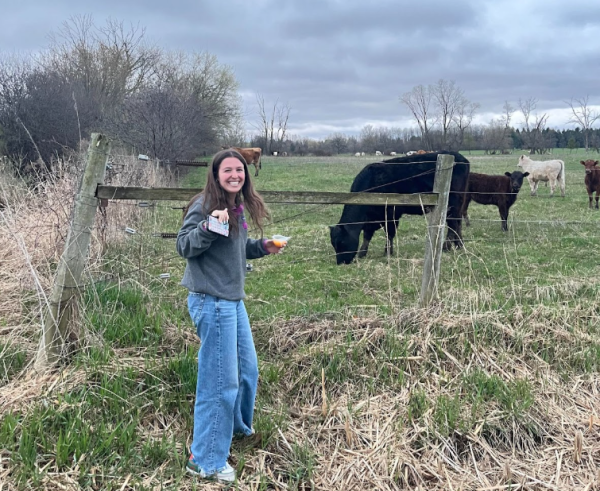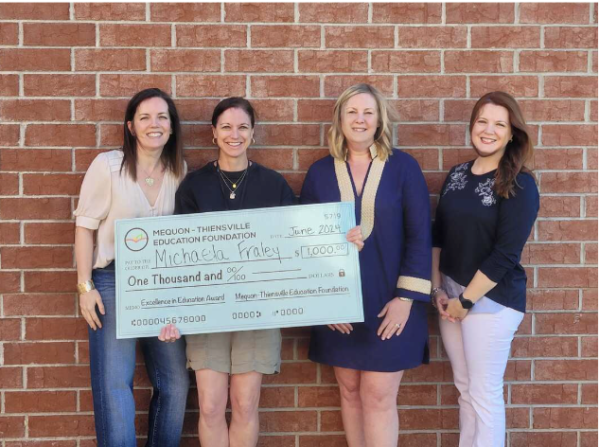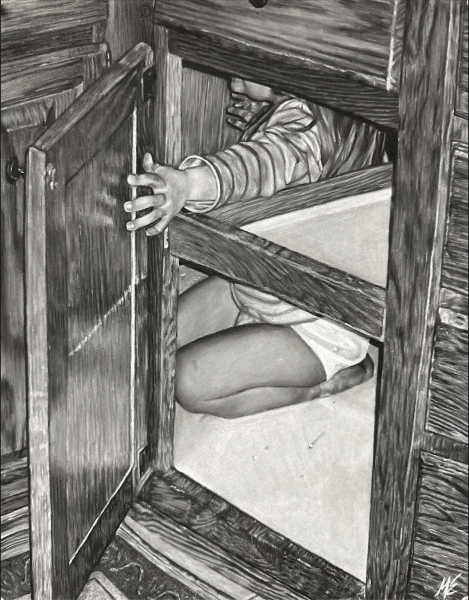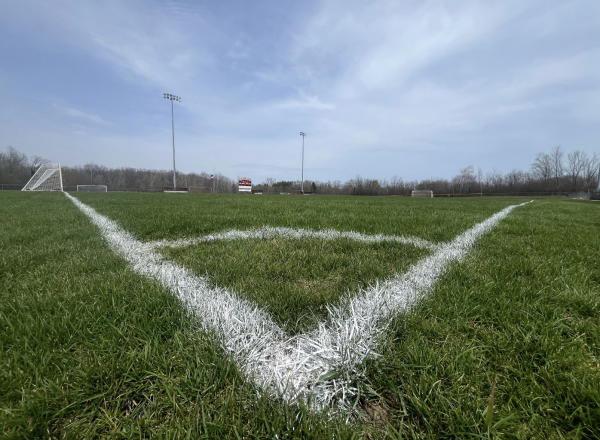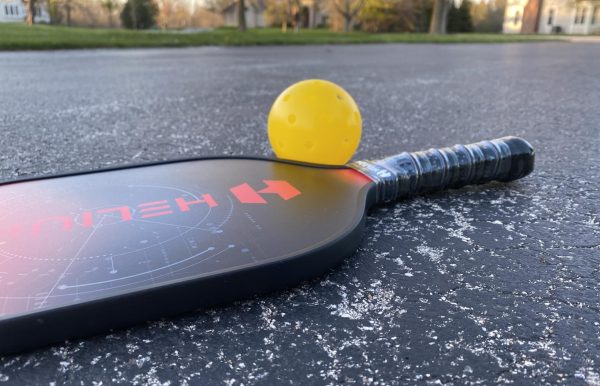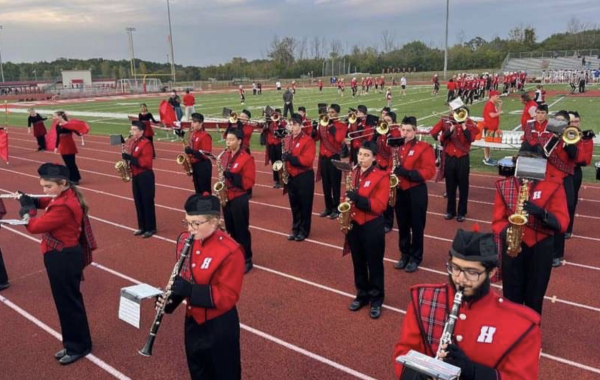Robotics: It’s more than just robots
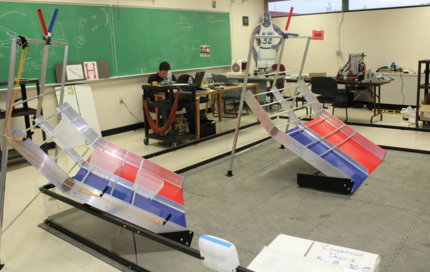
This is the practice field on which the robotics club members test their creations. Their robots must climb up one of these ladders (called mountains) and attach themselves to the top rung.
Although the robotics club is only two months into its season, the team is already designing, building, and programming functional robot masterpieces. This year, the challenge is to create a robot that will eventually climb a large ladder and attach itself to the top rung. The robot must first be able to complete a variety of other tasks, including putting certain pieces in designated places, pushing buttons, and parking in special areas, and it must complete tasks both autonomously and with a driver.
Mr. Robert Bruch, head robotics club adviser, said, “The robotics club is actually broken up into six teams this year, each of which is building their own robot to solve the challenge of the FIRST Robotics Technical Challenge (FTC).” The team members must work collaboratively during practices and on their own time to help design and create the finished product. Additionally, according to Mr. Bruch, “Each team has a different set of goals that they set by deciding which of the scoring elements in the game that they are going to try for.” Therefore, the club contains an element of creativity; each team makes decisions about how its robot will function.
However, despite the club’s emphasis on the building process, it does not stress solely innovation. It also emphasizes application, gracious professionalism, organization and teamwork.
Mr. Edward Byaliy, robotics club adviser, said that robotics teaches its participants how to, “apply basic scientific knowledge that they learn in class in the real world.” Students learn that equations and concepts that they learn in class are not only useful for solving homework problems, but for creating solutions in real-life situations.
Robotics also teaches gracious professionalism, the willingness to aid others despite their alliances. According to Mr. Byaliy, “[in] any other tournament…you try to hide your ideas and your skills from all other teams, where here, you are strongly encouraged and rewarded for sharing your ideas and helping other teams. It’s very common for one of the teams to have a problem, and other teams will come in and help them solve the problem: loan the tools, parts, come in with ideas and help.” In Mr. Byaliy’s opinion, this is what sets this organization apart from any other extracurricular activity.
Organization is imperative to the proper functioning of the robotics team; the team has to organize its funding in order to be able to procure necessary robot parts. Mr. Byaliy said, “once they receive the challenge, they have to design the robot, program it, but also parallel to that, they create a business plan. They need to figure out their fundraising strategy, they need to raise money for travel, for parts….” Working up to the deadline of a competition also stresses the completion of a difficult task in a timely manner.
The club even teaches speech and writing. According to Mr. Byaliy, “[members] talk to company executives about why that company needs to give us thousands of dollars for the club.” Teams also can attain the coveted Inspire Award for promoting FIRST (the international organization of which FTC is a division) through writing promotional pamphlets and brochures.
Tony Grueninger, freshman in college and previous president of the robotics club, stopped by on a long weekend from college to check on the team. Grueninger said of the club, “I’ve had some of the best experiences in high school here, and I ended up going into robotics.“ He also said, “Robotics is actually pretty social, contrary to the stereotype; you’d just be talking while you’re working. It was a lot of fun.” Grueninger’s great experiences in robotics inspired him to do electrical and mechanical engineering with a robotics minor in college.
Similarly, Nathan Grisa, senior and head builder, said, “I’ve done many extracurriculars at Homestead. Robotics is definitely one of the best I’ve done.” He also stressed the social aspect of the team when he said, “you make a bunch of friends, and honestly, it’s just a joy to come here and then hang out with all the people I have on my team. If you’re looking to join a club, and if you’re willing to make new friends, maybe even get some of your friends to join with you, robotics will be happy to take you.”
Both Grueninger and Grisa say that robotics has a place for a myriad of students. This club even works well with the schedule of an athlete, whose athletic practices often end before 6:00; robotics starts at 6:00 and ends at 8:00 Mondays and Wednesdays.
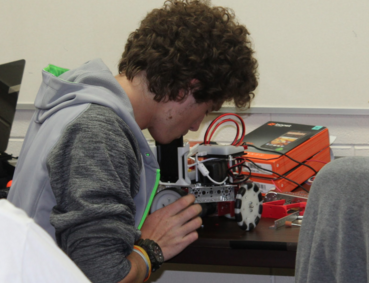

You have a good chance of finding Lauren quickly if you look first in two places: at school or at her desk at home. After school, she debates in the fall...

